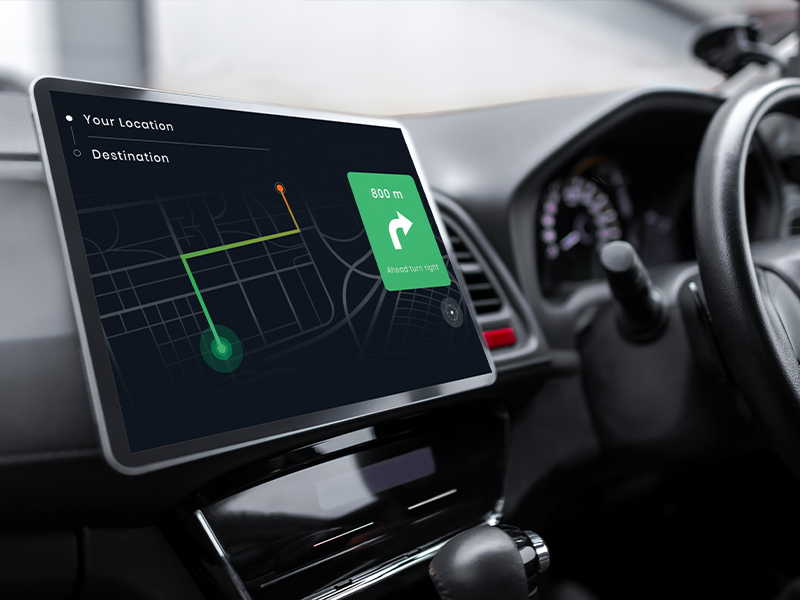Autonomous Cars: A Myth or Reality?
Autonomous Cars:
A Myth
or
Reality
?
Auto-engineers, as well as engineering pioneers, have been fascinated by the concept of ‘Driverless’ cars ever since the advent of the second half of the 21st century. The technological advancements in the field of computer science and information technology have made it easier for them to see their dream become a reality.
But one could easily be wound up if the description of ‘Autonomous Cars’ is seen through a variety of perspectives. Over the years, the confusion lies somewhere in between a car being ‘Driverless’ or a ‘Self- Driven’ car. Like what every rhombus is a square and not vice-versa, every driverless car can be termed as self-driven, but it just does not fit well for the exact opposite. A few peculiar similarities and subtle difference are the gap between the two concepts.
A self-driving car can make the ride safer for the driver as well as the passengers. Such cars are equipped with sophisticated computers which track everything that happens between the source and the destination. These systems mainly incorporate ‘Artificial Intelligence’ which can assist the driver whenever required. As mentioned in our previous blog, AI is a self-deciding system which mimics humans so that it can respond properly in any circumstances. Like humans, AI learns from its own previous inputs and finds a solution to the problem.
Companies like Nvidia have invested huge sums of money in the development of such vehicles. Recently, the company launched the ‘Nvidia Drive’ which has three separate modules.

DRIVE WORKS
Provides all points of reference and aids its sub-modules to acquire and process vital data and sets up an interface with the driver and the system. The Drive Network is responsible for the detection of obstacles which forces the system to act accordingly. Drive Calibration module helps to set the parameters of the vehicle when in motion.
Drive AV
Drive AV consists of three modules consisting of mapping, planning and perception. Mapping is responsible for locating the position of the vehicle on the surface whereas planning pre-determines the path the car would take to its destination. It shares similarities with GPS as it suggests a better and a faster route. Perception uses data collected in the Driveworks system using ‘Direct Neural Networks’ and sensor data for start and stop operations.
DNN’s basically are more than two neural networks which form a complex database. There is an input layer and an output layer and in between lie more than one subordinate layer. Each layer has an ordering and sorting activity. As the layers are interlinked, unlabelled or scattered data can be recovered and processed faster and more efficiently.
Drive IX
In this module, algorithms are provided to simulate real-life surroundings in the cockpit and gives the driver cabin-based assistance. It could be when the car is in motion or still. Looking at Nvidia’s autonomous car, one could compare it to the autopilot installed on aircraft. Autopilots quite similar to self-driven cars. But it does not mean that the aircraft is operated without pilots on board. The same holds true for ‘Self-Driven’ cars.
Truth be told, ‘Autonomous vehicles’ do not exist. In the future they might, but today our comprehension of autonomous cars, in reality are ‘Self-Driven’ or ‘Automated’ cars. The term ‘Autonomy’ stands for wilful decision making without any kind of governance over an operating system. According to this definition, an ‘Autonomous Car’ and its software system would never acknowledge the input of the pilot and instead would drive itself around arbitrarily without its will. These cars might never have steering wheels or brake pedals and they would be smart to choose the destination and the route learning from their AI systems.
But companies like ‘Waymo’ are getting closer to the future as they have tested a few prototypes of ‘Driverless’ or ‘Autonomous Cars’. The manufacturers claim that their cars have inbuilt autonomy and have a 360 view of its surroundings. Like a TCAS (Traffic Collision Avoidance System) on aircraft, Waymo cars use radars to detect to track other objects in motion. Engineers at Waymo have developed a program called ‘Carcraft’ that can simulate driving conditions similar to the real world. Such advances in the integration of complex AI systems in daily activities like driving is surely a leap into the future.
The terms ‘Automated’ and ‘Autonomous’ could mean the same but in literary terms, the idea of a fully autonomous vehicle does not seem too far-fetched looking at the example of Waymo. It is just a matter of time that we would see cars without drivers with radars on their hoods driving around the streets like in San Francisco.

